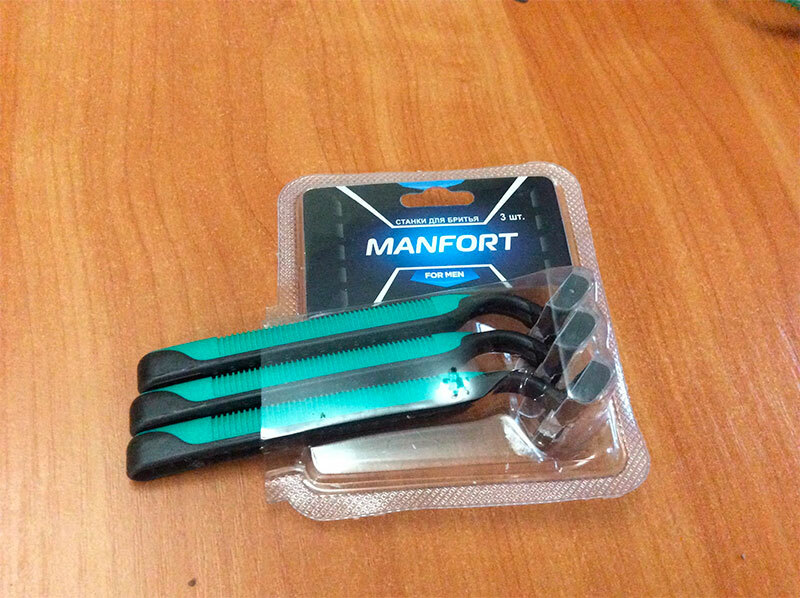
- What is a water-based paint?
- Do not wash off or wash away the water-based paint?
- Where to start?
- How to wash off water-based paint?
- Special cleaning agents for paint walls
- Cleaning of surfaces with water-based paints with professional tools
- Recommendations for work:
How to wash water-based paint off walls?- Everyone who wants to update the interior of the room faces this question. In the process of applying paint to the wall and ceiling there is a high probability that minor drops will fall on furniture, floor covering, clothing and other household items. Judging from the name of the paint, it should simply be washed off with water. Is it really? In this article we have selected the most effective ways, tested by experienced construction masters and ordinary housewives, which will help you cope with this problem.
to the contents ↑What is a water-based paint?
The most popular paint in building stores is a water-based paint. Due to its constituents, the dye has a number of positive properties:
- It is easy to apply to any surface;
- Has a diverse palette of colors;
- Virtually no odor;
- Easy to clean;
- Does not require special care in the future.
It would seem that having so many positive qualities, it makes no sense to look for paint of another composition. But water-emulsion has one, quite significant drawback - the difficulty of removing traces of spilled coloring matter. Than to wash off water-emulsion paint in that case?
to Contents ↑To wash or not wash off the water-based paint?
If the applied paint layer is firmly fixed to the ceiling or walls, it can not be washed off. A new layer of dye can be applied over the old one. But before painting the surface must be prepared.
Preparation of the surface before re-applying the paint:
- With a damp cloth, remove dust and dirt from the wall.
- Allow the surface to dry completely.
- Use a special primer to cover a dry wall.
Important! For water-based paints, experts recommend using an acrylic primer.
After the processing, a new layer will lie evenly on the surface.
But there are situations where removing water-based paint from walls or ceiling is simply necessary.
It is recommended to flush the paint in the following situations:
- If the paint on the ceiling cracked in some places, bubbles ceased or formed, it must be washed off.
- When carrying out major repairs of the room.
- If you plan to use a different kind of paint on the wall or ceiling.
- The new tone you selected is much lighter than the old one.
Important! Regardless of how many layers you apply, the dark color will appear through the new coating.
to the contents ↑Where to start?
Before proceeding with the direct removal of paint from the surface, it is necessary to determine the type of coating treated with the dye. This will determine how to wash the water-based paint. Also, you should prepare all the necessary equipment in advance for this work.
- On a floor covering lay a polyethylene film or newspapers that all garbage from a wall did not pollute a linoleum or a parquet.
- Prepare a basin or a bucket of clean water and rags.
- You will need a spatula to scrape the paint off.
- Find a roller with a soft pile to wet the walls or ceiling with water.
- A brush with a metal bristle will serve you to scratch the coating so that the water gets inside the paint.
- Prepare the sandpaper.
- Solvent or acetone will help to achieve the best result.
- Wear work clothes.
- Prepare a ladder or step-ladder to increase access to surface treatment.
How to wash off the water-based paint?
There are several options for such cleaning. As already mentioned, the choice of this or that method depends on the coverage from which the paint needs to be removed.
Mechanical method
Doing repairs in an apartment or other room, very often the question arises, how to wash the water-based paint off the ceiling? Effective and efficient way of the master note exactly the mechanical removal of the dye.
Cleaning method:
- On the floor, cover the film so that the paint remains do not damage the floor covering.
- In warm water, moisten a roller with a soft pile, and treat the place that is going to be cleaned.
- Leave the ceiling moist for 10-15 minutes.
- Pick a spatula that is comfortable in width and remove the remnants of softened paint.
Important! When using a spatula, perform all movements in one direction only.
- Sites where the paint is poorly lagged, rub with a bristle brush.
Important! This method is not recommended for use on surfaces prone to scratches, for example on linoleum. In this case, you should look for a method that is more gentle.
Soap solution - Remover for water emulsion
A proven method of removing paint at home - the application of a soap solution. Since the paint is water-based, using water to remove its traces from the coating will be no less effective than using a mechanical method. The only thing that should be taken into account, this method can take a little longer.
How to use:
- Pour warm water into the prepared container and add soap or detergent into it. Thoroughly foam the product.
- Use a roller or sponge to apply liquid to a contaminated area.
- Leave the surface damp for 10-15 minutes to peel the paint off the wall.
- Wash off any remaining paint with a damp cloth, periodically rinsing it with water.
- Finally, dry the cleaned area and make sure there are no traces of soap.
Important! If the coating formed soapy stains, the cleaning process will have to be repeated, only without soap.
We wipe the dried stains from the water-based paint
If in the process of covering the walls or ceiling you could not avoid the appearance of traces of paint on the linoleum, or you did not notice and clean the flooring on time, take note of the following method.
Cleaning sequence:
- To soften the dried stain, apply a small amount of water to the trail from the paint.
- If the contamination is large enough, wet a clean rag and cover it with a stain.
- Leave it for a while, so that the coloring material exfoliates from the floor.
- Clean the dirt residues with a brush or a normal rag.
Important! To clean delicate surfaces like linoleum or parquet, do not use products that include abrasives and brushes with stiff bristles to avoid damaging the flooring.
Application of solvents
Easier and quicker to wipe off old traces of water-based emulsion or several layers of such a coating can be done with solvents. In this case, it is perfect:
- Formic acid.
- Isopropyl alcohol.
- Chloromethane.
These solvents are environmentally friendly and quickly disintegrate, but they have a very high flow rate when used in large contaminated areas. You can use other solvents, which will cope with the task in high quality.
Important! Before use, read the instructions and the composition of the selected product. Often in the washing of paint add toxic substances that can harm your health.
to content ↑Special cleaning agents for paint walls
In building hypermarkets on the shelves there are not only goods for wall finishing, but also special tools for easy removal from surfaces. These products have different concentrations, so wash the colorant from the walls and the ceiling in different ways. Master builders in most cases recommend the following tools.
Remover for water-based paint "Usadba"
Special means for removing paint from wooden, metal and concrete surfaces. In its composition there are no acids and alkali, so it will clean the surface in the most gentle manner.
Important! The agent has a gel-like consistency, so it can be used for both horizontal and vertical processing.
How to use:
- To cover the wall with a tool, use a brush, preferably with a natural pile.
- Leave for a while on the surface to soften the paint layer.
Important! The time of fluid exposure will depend on the number of layers and the type of surface to be treated.
- With a spatula, remove the peeling paint.
- Rinse the remains of the paint substance with a clean rag soaked in water.
 Special tool "Set Boya Sokusu"
Special tool "Set Boya Sokusu"
The substance will perfectly cope with the cleaning of wooden, metal and concrete walls.
How to use:
- Apply brush cleaner.
- Leave for 5-10 minutes on the ceiling to soften the dye.
Important! The exposure time depends on the type of surface to be treated.
- As in the previous method, remove the remains of the paintwork with a spatula.
Important! If the paint can not be removed completely, repeat the procedure again.
- Finally, clean the cleaned ceiling with a cellulose solvent.
Important! This product is not suitable for use on plastic products.
to the contents ↑Surface cleaning from water-based paint with professional tools
To use this method, you will need a special tool:
- Building dryer.
- Drill with a grinding head.
Important! If at home this tool is not available, there are companies that provide construction equipment for rent. Using a professional tool, the process of removing the coloring material will be greatly facilitated.
Sequence of work with a construction hair dryer:
- Connect the hair dryer to the electrical network.
- Direct warm air to the painted wall.
Important! Treat ceilings and walls in small areas.
- Remove the blistered paint with a pre-prepared spatula.
- Remove the residue from the applied colorant with a metal brush.
- Finally, do a wet cleaning in the room.
Using the
grinder In most cases, professional builders remove the old or too thick paint layer with a grinding machine. As an alternative, you can apply a drill with a special round nozzle in the form of a brush with a metal bristle. Such a nozzle you can buy in a construction shop.
Important! In the process of removing paint this method creates a large amount of dust, so it is better to use a grinder for floor and walls of wood or concrete.
The sequence of work is similar to the method described above.
Important! When working with a professional tool, be sure to wear protective eyewear and a respirator.
to the contents ↑Recommendations for work:
- To effectively remove paint from walls and ceiling, apply water to small areas. Otherwise - the surface will have time to dry up and the procedure will have to be repeated again.
- If drops from water-based paint come into contact with furniture and other items, wipe them immediately, do not wait until it dries completely.
- If the paint gets on clothing, wash it thoroughly under water or pat dry with a tissue.
Important! Do not rub a fresh stain. By doing this you will only increase the amount of pollution.
In conclusion, I would like to note that fresh stains from paint are much easier to remove. And having in stock effective advice, than to remove water-based paint from the walls, repair will be a pleasure, and the effort spent on your side is much less.



